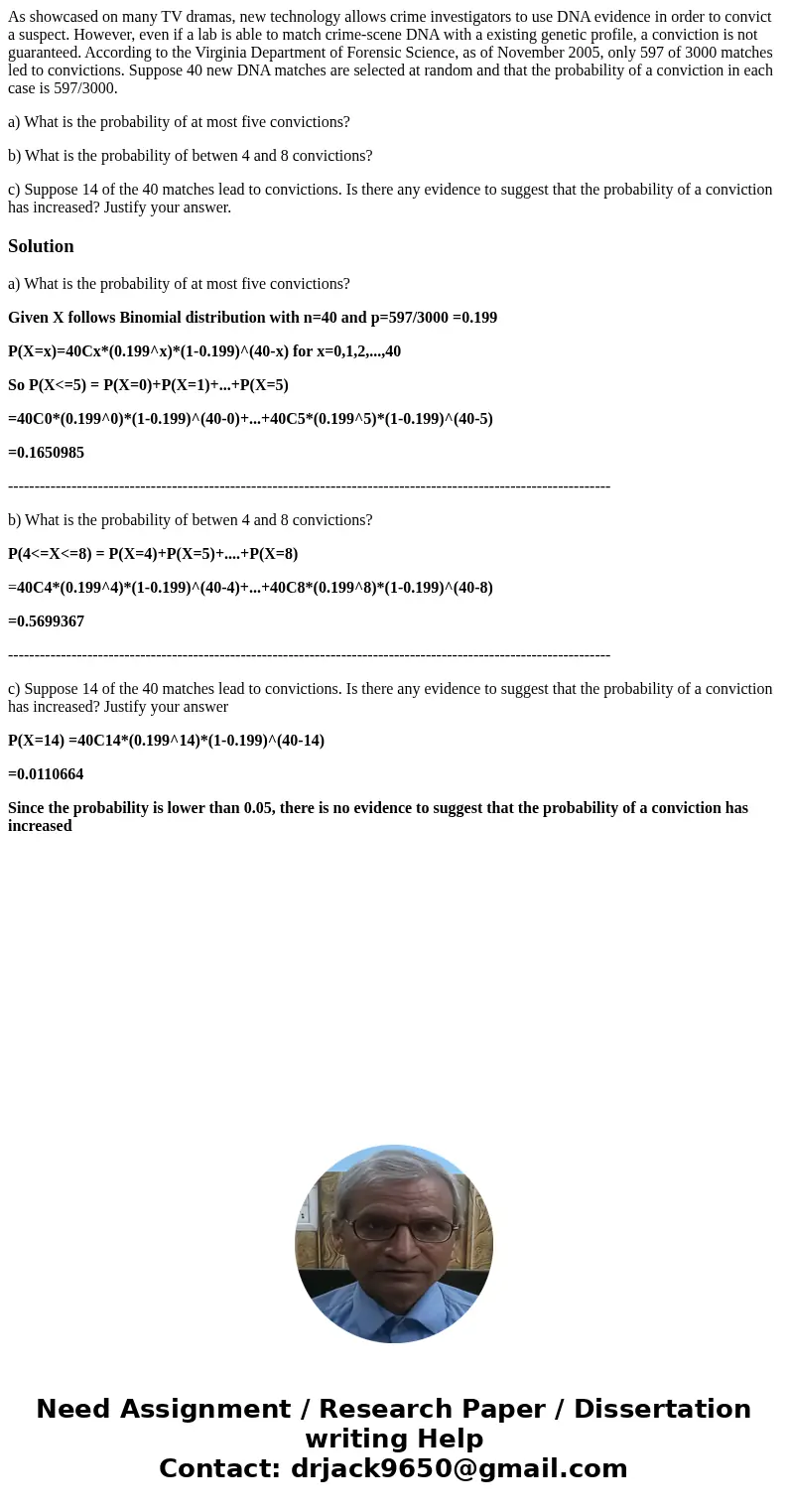As showcased on many TV dramas new technology allows crime i
As showcased on many TV dramas, new technology allows crime investigators to use DNA evidence in order to convict a suspect. However, even if a lab is able to match crime-scene DNA with a existing genetic profile, a conviction is not guaranteed. According to the Virginia Department of Forensic Science, as of November 2005, only 597 of 3000 matches led to convictions. Suppose 40 new DNA matches are selected at random and that the probability of a conviction in each case is 597/3000.
a) What is the probability of at most five convictions?
b) What is the probability of betwen 4 and 8 convictions?
c) Suppose 14 of the 40 matches lead to convictions. Is there any evidence to suggest that the probability of a conviction has increased? Justify your answer.
Solution
a) What is the probability of at most five convictions?
Given X follows Binomial distribution with n=40 and p=597/3000 =0.199
P(X=x)=40Cx*(0.199^x)*(1-0.199)^(40-x) for x=0,1,2,...,40
So P(X<=5) = P(X=0)+P(X=1)+...+P(X=5)
=40C0*(0.199^0)*(1-0.199)^(40-0)+...+40C5*(0.199^5)*(1-0.199)^(40-5)
=0.1650985
------------------------------------------------------------------------------------------------------------------
b) What is the probability of betwen 4 and 8 convictions?
P(4<=X<=8) = P(X=4)+P(X=5)+....+P(X=8)
=40C4*(0.199^4)*(1-0.199)^(40-4)+...+40C8*(0.199^8)*(1-0.199)^(40-8)
=0.5699367
------------------------------------------------------------------------------------------------------------------
c) Suppose 14 of the 40 matches lead to convictions. Is there any evidence to suggest that the probability of a conviction has increased? Justify your answer
P(X=14) =40C14*(0.199^14)*(1-0.199)^(40-14)
=0.0110664
Since the probability is lower than 0.05, there is no evidence to suggest that the probability of a conviction has increased

 Homework Sourse
Homework Sourse